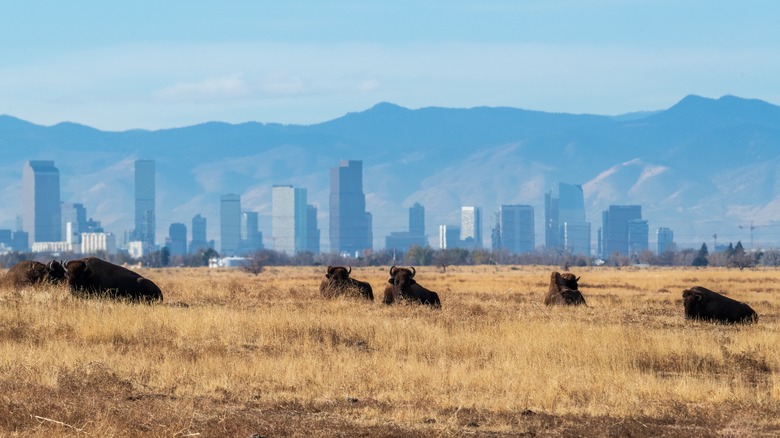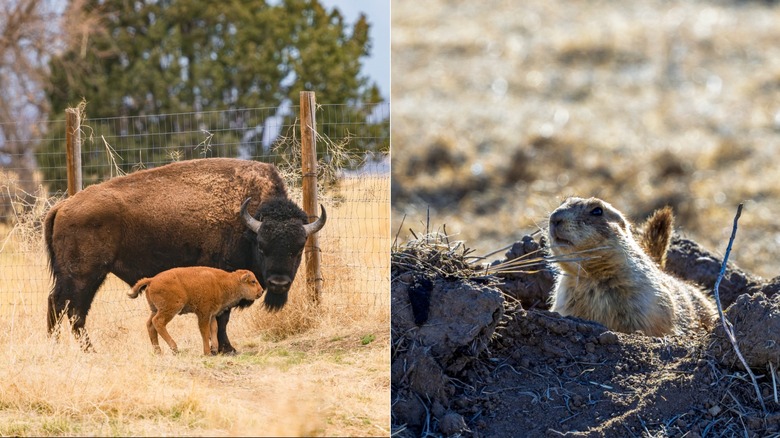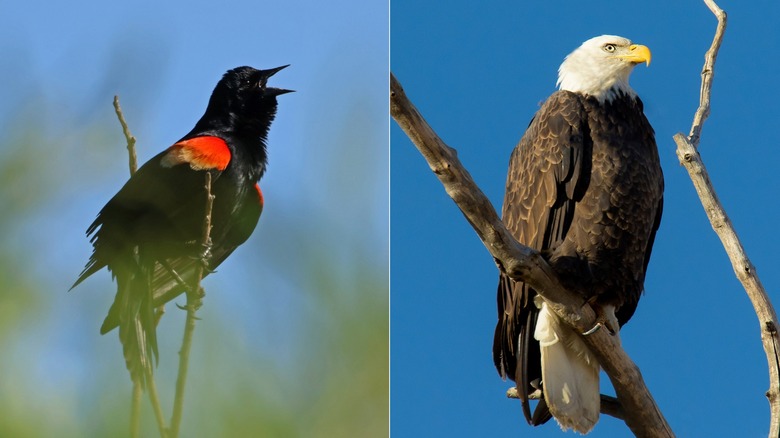One Of The Most Intriguing Ecological Sites In The US Is A Colorado Wildlife Hotbed Just Minutes From Denver
When you think of a wildlife refuge, you probably think of an idyllic landscape where animals can thrive. You probably don't think of it as the same site as a munitions manufacturer. But that's what you get at the Rocky Mountain Arsenal National Wildlife Refuge. This 15,000-acre expanse of land just to the west of Denver International Airport, America's largest airport, was once the Rocky Mountain Arsenal, a site where chemical weapons were made during World War II. That was followed by pesticide manufacturing, and over the years, the land and water became so contaminated it was listed as a Superfund site. Superfund sites are those identified by the Environmental Protection Agency to be rehabilitated to a productive land use status.
Extensive clean-up efforts started in the 1980s after bald eagles were spotted nesting in the area, and by the early 2000s, the land was deemed safe to be used as a wildlife refuge. It's now one of the country's largest wildlife refuges with over 300 species of animals making their home here, including some iconic animals from the American West, like bison, bald eagles, coyotes, and mule deer. Perhaps best of all? It's free to visit.
Visitors can explore the refuge in several different ways. One way is by car. There's an 11 mile self-guided route through the refuge, featuring an accompanying podcast tour that you can download in English and Spanish. Part of the drive takes you through the fenced-in bison range; over 30 bison calves were born in 2025 into the herd of about 250. Remember to stay in your car. The wildlife is just that, wild, and a bison will defend itself if it feels threatened.
Trails and wildlife at Rocky Mountain Arsenal Refuge
Bison have been a vital part of this landscape for centuries, if not more, and long before Rocky Mountain Arsenal National Wildlife Refuge land was used to make munitions, it was used by Indigenous people for hunting grounds. So getting a chance to see a bison herd back here is particularly special.
Along with bison, there's another species that has a vitally important role in this high plains prairie landscape, but you may never see that one in the wild: the black-footed ferret. Once thought extinct, this small mammal species is nocturnal and mostly live underground in tunnels built by prairie dogs (which is also their favorite food source), and there's lots of prairie dogs here. Though they're still considered an endangered species, black-footed ferrets have been reintroduced to the Rocky Mountain Arsenal National Wildlife Refuge. It seems fitting that an animal that was once thought extinct is now thriving in a landscape once thought to be contaminated. You can get a chance to see some black-footed ferrets at the exhibit behind the Visitor Center. The center also has interactive exhibits about this unique refuge.
You can't hike in the fenced area for bison, but there are 10 miles of hiking trails in other parts of the refuge. Some trails are open for mountain bikers and e-bikes as well, and around 5 miles of the multi-use Rocky Mountain Greenway trail run through the southern end of the refuge. The Rocky Mountain Greenway will eventually join other Denver area wildlife refuges all the way to Rocky Mountain National Park, full of outdoor adventure. The first section joining Rocky Mountain Arsenal with Two Ponds National Wildlife Refuges in northwestern Denver, is already complete.
Planning a visit to Rocky Mountain Arsenal Refuge
Along with hiking and biking, Rocky Mountain Arsenal National Wildlife Refuge is fantastic for birdwatching. More than 280 bird species pass through the area, which is part of the country's Central Flyway migration route. There are a number of blinds along the hiking trails where you can watch for species like bald eagles in the winter, great blue herons in spring, burrowing owls in summer, and sandhill cranes in fall.
From the first Saturday in April through the end of November, you can go catch-and-release fishing for northern pike, largemouth bass, bluegill, yellow perch, and more at two of the lakes at the refuge. Make sure you have a fishing license. Other activities include a 15-lane archery shooting range, kid-friendly nature programs, and cross-country skiing.
The refuge is open from sunrise to 8 p.m. from May 1 through August 1, otherwise it's open until sunset (except for Thanksgiving, Christmas, and New Year's Day). The Visitor Center is open from 9 a.m. to 4 p.m. Wednesday to Sunday (except for federal holidays). The refuge is on the eastern edge of Denver, about a 30-minute drive from downtown. For the ideal place to stay to explore the wildlife refuge, head to Gaylord Rockies Resort & Convention Center, one of Colorado's largest resorts, is less than 10 miles away. And for more fun on this side of Denver, the town of Aurora has a combination of urban and outdoor charm, and it's just about 20 minutes south of the refuge.


